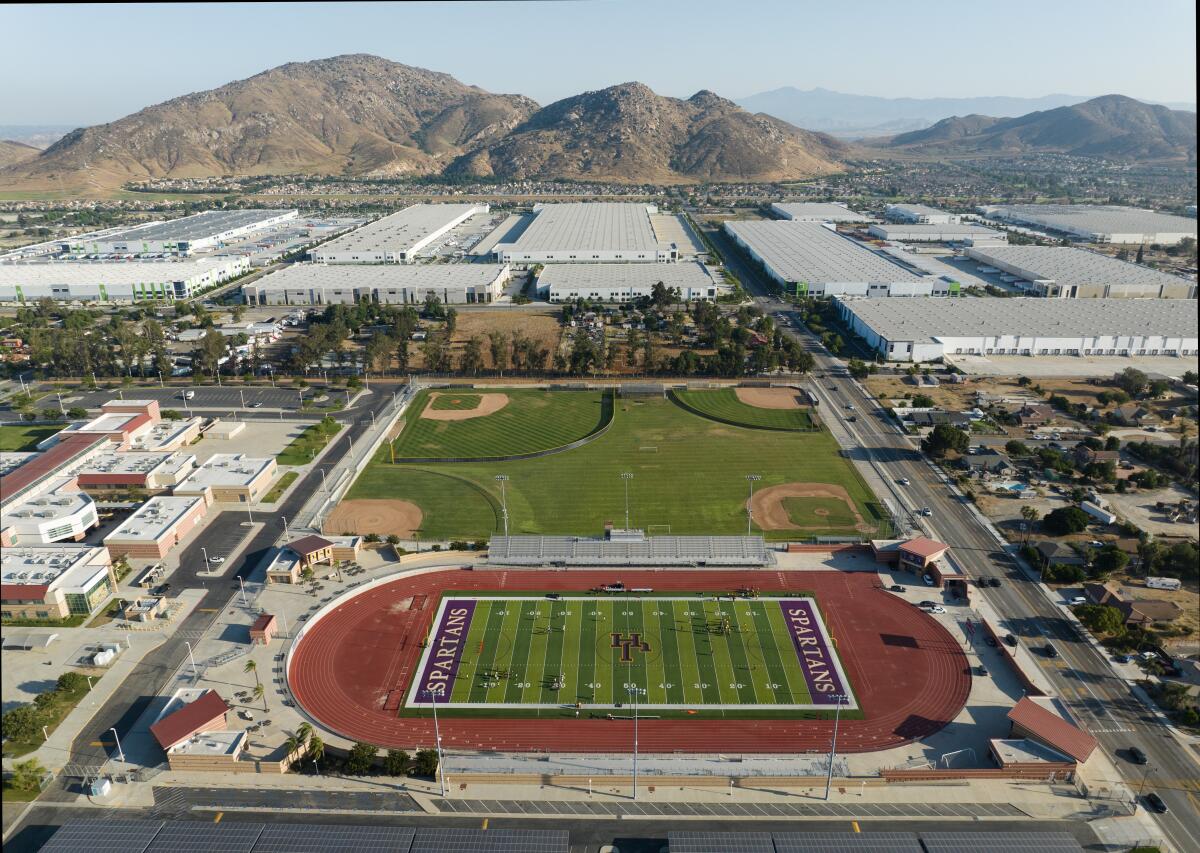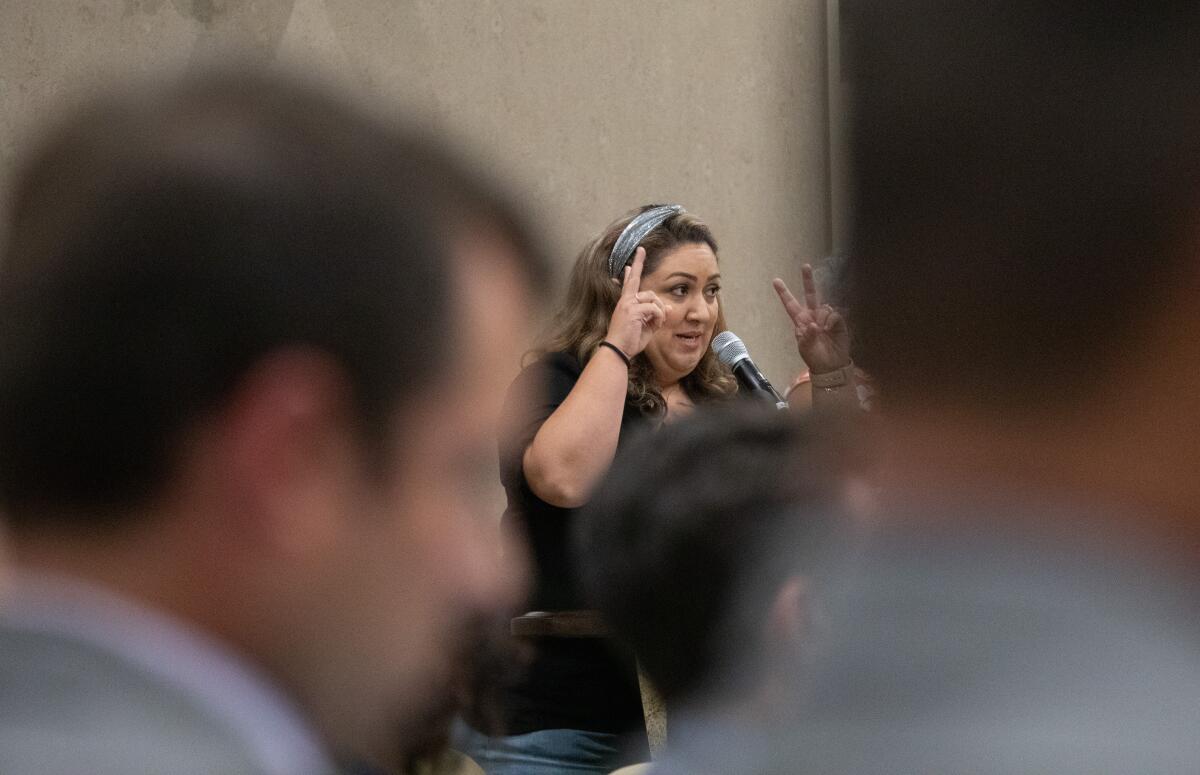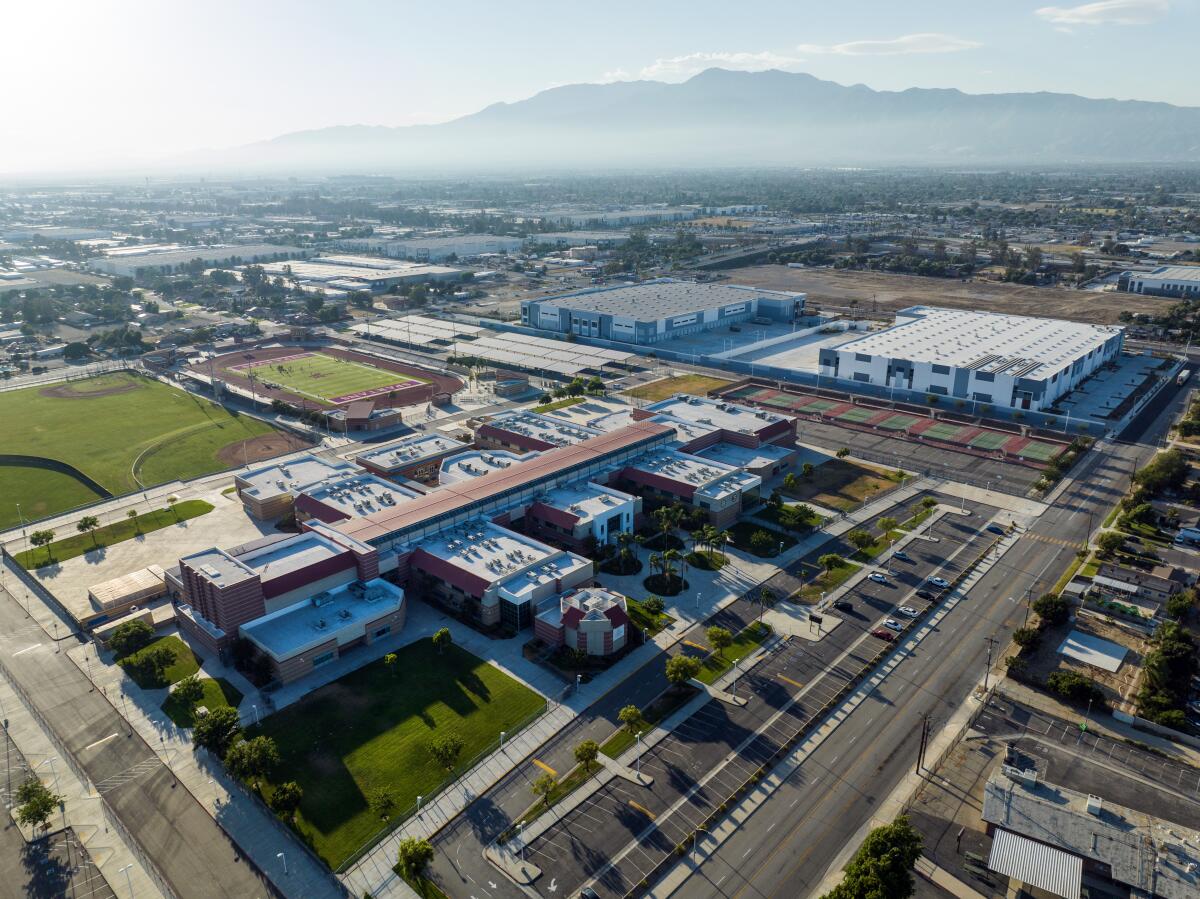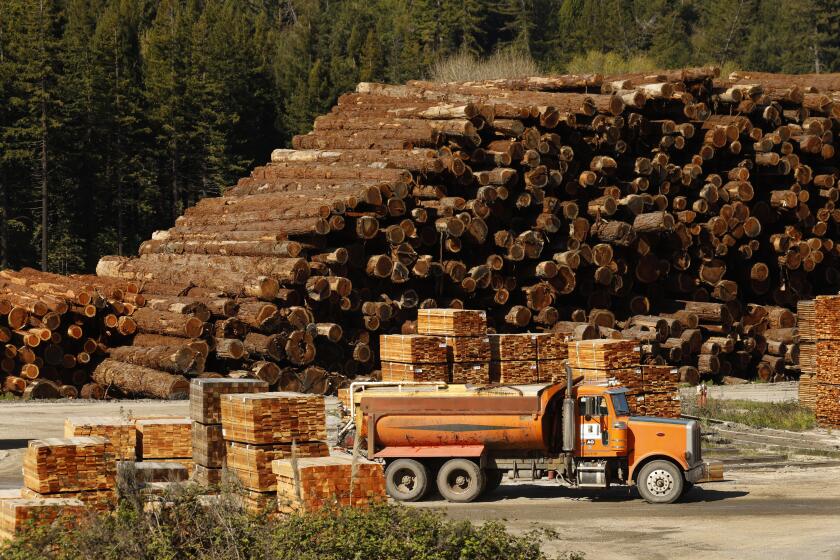Fontana rejects massive warehouse proposal amid public outcry and pollution complaints

- Share via
Facing heated criticism from residents, as well as complaints of worsening air pollution due to truck delivery traffic, the Fontana City Council has narrowly rejected a proposal to build three sprawling warehouses near two high schools.
At a turbulent three-hour meeting Tuesday evening, council members voted 3 to 2 against rezoning 29 acres of residential property directly south of Jurupa Hills High School and west of Citrus High School. The request came from Acacia Real Estate Group, which wanted the land approved for industrial use.
The warehouses, which would have comprised 540,000 square feet and 69 loading docks, were expected to generate more than 300 daily truck trips and 600 passenger vehicle trips, releasing more harmful tailpipe emissions near school recreational areas, according to a state-mandated environmental analysis.
Before the vote, the Newport Beach-based developer had sought to ease community concerns by proposing a 45-foot landscaped buffer between warehouses and Jurupa Hills, in addition to boosting its contribution to a neighborhood benefit fund to nearly $3.3 million. Council member Philip Colthran also suggested amendments intended to alter truck traffic. Those concessions however failed to persuade a majority of the City Council, including John Roberts, who described his decision as an “uncharacteristic” no vote.
“It was a difficult spot to put one to begin with,” Roberts said about the proposal. “I would have liked to see a little bit more mitigation, as far as doing other amenities in the community, that kind of make it a little bit more palatable.”
Pollution from cooking with a gas stove may be on par with breathing secondhand tobacco smoke, according to new research.
The decision marked a rare win for community activists and residents who have been fighting against the unrelenting pressure of warehouse expansion in the Inland Empire, a region with more than 4,000 warehouses and notoriously heavy truck traffic.
Over the last decade, a wave of consumerism and a shift to online shopping have given rise to the construction of massive logistics and distribution depots.
But trucks ferrying this cargo release tremendous amounts of harmful particulate matter and smog-forming nitrogen oxides. San Bernardino County already endures the highest annual concentrations of smog in the nation.

Many Fontana residents were particularly outraged about the Acacia proposal because the city had been sued by California Atty. Gen. Rob Bonta over another warehouse development nearby.
Two years ago, the city of Fontana approved a Duke Realty Corp. proposal to build a large warehouse next to Jurupa Hills High School. Liz Sena, co-founder of South Fontana Concerned Citizens Coalition, urged officials to reconsider, but failed to convince them. Her efforts, however, attracted Bonta’s attention.
“I can’t help but think how nervous I was at that time, because of the precedent it was going to set,” Sena said. “I knew that so much was on the line. If this city was going to allow for this warehouse to be built next to the high school back then, it would be impossible to stop anything that comes after.”
In his lawsuit, Bonta argued the City Council, in its haste to greenlight the 205,000-square-foot facility, failed to thoroughly evaluate the unhealthy levels of air pollution that already pervaded South Fontana.
At the time, more than 20 warehouses were located within a mile of Jurupa Hills High School, each attracting convoys of heavy-duty trucks emitting harmful air pollution in “a low-income residential community that bears one of the heaviest pollution burdens in all of California,” according to his lawsuit.
Bonta eventually settled with the city, allowing the development to move forward after Fontana adopted an ordinance with a litany of environmental provisions for large warehouses.
A little more than a year later, Acacia proposed a warehouse complex that was two times larger than the one Bonta challenged in court.
Ben Vasquez, a lifelong resident of Fontana, claimed that some officials were intent on approving any warehouse plan, despite the protests of residents to Bonta’s office.
“The mayor and her developer buddies are skirting the rules once again, and now this time, they’re kind of laughing in Bonta’s face, saying, ‘We don’t care,’ ” Vasquez said.
Bonta’s office did not respond to several requests for comment.
Regulators at all levels of government have struggled to reduce pollution from the movement of goods between the Inland Empire and the San Pedro Bay Port Complex.
The South Coast Air Quality Management District has implemented a first-of-its-kind rule that would require warehouses to offset a certain amount of emissions from their truck traffic, actions such as installing solar panels and electric vehicle chargers, or using zero-emission forklifts. Otherwise, they would have to pay a pollution mitigation fee.
This March was the deadline for the largest warehouses (more than 250,000 square feet) to demonstrate what steps they had taken to mitigate air pollution or whether they intended to simply pay a fee. At the deadline, only 45% of warehouse operators even filed a report, according to the air district.
Air district spokesperson Nahal Mogharabi said it was “not as high as we want it to be yet,” but noted warehouse operators who submitted reports outperformed the district’s expectations.
As global demand for wood products is projected to rise over the coming decades, the world is expected to log about 3 million square miles of forestland.
Fontana Mayor Acquanetta Warren, elected to her fourth term last year, touted the new warehouse ordinance, which included buffer requirements and other measures. She voted in favor of the Acacia development, underscoring the job opportunities these developments have brought.
“We have a really good economy because we are providing good jobs,” Warren said before casting her vote. “We have so many opportunities to bring young people and so we’re proud of what we’ve done.”
Her sentiments were echoed by representatives from business and labor organizations on the employment and tax revenue these developments bring.


“The local logistics industry is the backbone of our local economy,” said Amanda Morales of the Fontana Chamber of Commerce.
But some residents pleaded with the City Council to move in a different direction.
Oscar Gonzalez, 23, who graduated from Jurupa Hills High in 2018, told elected officials he witnessed firsthand how the area around the school has changed: Vacant lots have been filled by massive warehouses and traffic congestion has worsened.
Now, he is worried about the health consequences future students will face, including his younger sister who will be attending the school next year. The proposed development would’ve placed warehouses right next to the baseball fields of Jurupa Hills and Citrus high schools.
“I wanted to ask all of the council members voting, would you knowingly send your kids to a school every single day knowing that there’s constantly this risk that they’re going to develop health issues later on?” Gonzalez said. “And if you don’t have the heart to do that, then why would you wish that upon us?”









